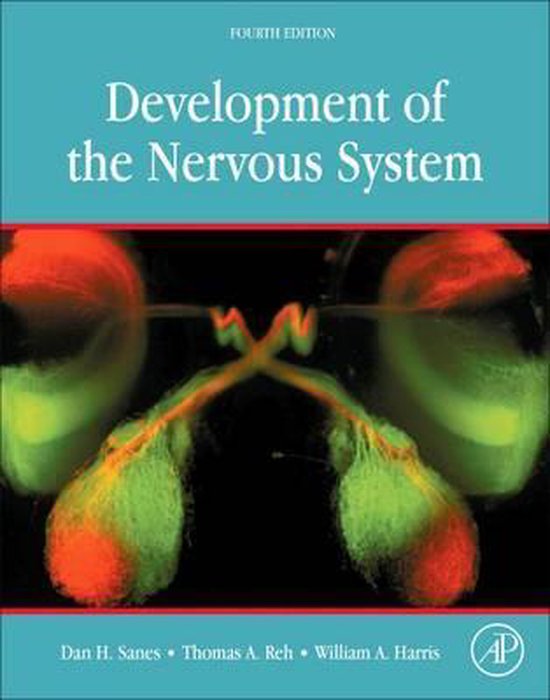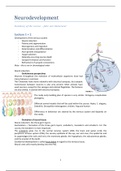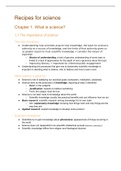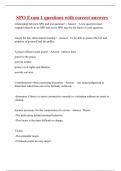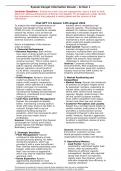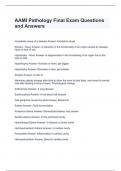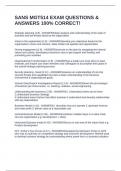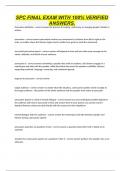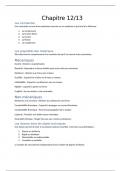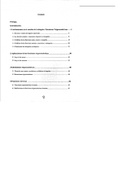Summary of the course – Julie van Immerseel
Lecture 1 + 2
Development of the nervous system
- Neural induction
- Polarity and segmentation
- Neurogenesis and migration
- Determination and differentiation
- Axon growth and guidance
- Target selection
- Naturally occurring neuron death
- Synapse formation and function
- Refinement of synaptic connections
Note – this is not in chronological order
Neural induction
- Evolutionary perspectives
Neurons throughout the evolution of multicellular organisms have had
many features in common.
The Cnidarians have nerve networks with electrical synapses, but synaptic
transmission between neurons is also very ancient. Most animals have
used neurons, except for the sponges and colonial flagellates. The features
are also similar; it started with electrical synapses.
The really early building plan of species is very similar. Ontogeny recapitulates
phylogeny.
Different animal models that will be used within the course: Hydra, C. elegans,
Zebrafish, Drosophila melanogaster, chicken, frog and human.
Differences in behaviour are steered by the nervous system and depends on
the needs.
- Derivation of neural tissue
Neural induction: the three germ layers
Gastrulation = formation of the three germ layers; endoderm, mesoderm and ectoderm. For this
course, the ectoderm is most important.
The ectoderm gives rise to the central nervous system (CNS; the brain and spinal cord); the
peripheral nervous system (PNS); the sensory epithelia of the eye, ear and nose; the epidermis and
its appendages (the nails and hair); the mammary glands; the hypophysis; the subcutaneous glands;
and the enamel of the teeth.
Ectodermal development is called neurulation in regard to the nervous tissue.
Neural crest cells mostly develop into the PNS.
1
,The nervous system shares a common cellular lineage
with the ectoderm.
Hydra - Nerve cells wiggle out of the epidermis
(ectoderm) and become a sensory cell or a neuron. They
will communicate with each other in a very simple
manner.
C. elegans -
Left image: The AB blastomere (in red) generates both skin (=hypodermis) as well as nervous system.
Right image: The next phase (= proliferation phase) in the development of C. elegans also highlights
the shared lineages of hypodermis and neurons.
The neurons are primarily derived from the ventrolateral surface, through the divisions of the AB
progency cells and migrate into the interior to form the nerve rings. This is completed in two days.
2
,Drosophila - The nervous system of Drosophila (fruit fly)
is derived from the ventrolateral region of the ectoderm.
→ Involution of the mesoderm at the ventral surface
brings the neurogenic region closer to the midline
→ Neuroblasts enlarge
→ migrate to interior
→ neurons and glia will form nerve cords.
The blue arrow indicates the invagination of the ventral
furrow.
The neuroblasts of the Drosophila
separate from the ectoderm by
delamination.
The delaminating neuroblasts then
generate several neurons through a
stereotypic pattern of asymmetric cell
divisions.
Nb = Neuroblast
GMC = ganglion mother cell
The cells depicted in red wiggle themselves out and will go to the inside
of the larvae and form two big bundles of nerve cells (the ventral nerve
cords of the Drosophila larvae).
3
, Frog (Xenopus Laevis) – The development of the CNS in a frog embryo.
The involuting cells go on to form mesodermal tissues (blue) and induce
the cells of the overlying ectoderm to develop into neural tissue,
labelled as the neurogenic region (red).
The neurogenic region forms the neural plate and is now restricted to
give rise to neural tissue.
It is very important that the mesoderm is close to the overlying
ectoderm, because of the induction processes. Cells need to be close to
each other in order to induce. Neuroectoderm will only become
nervous tissue when it is induced by the underlying mesoderm.
The archenteron will become the future gut.
The earliest tube created is the neural tube. Creating tubes within tubes
is a hallmark of development.
Gastrulation in Xenopus laevis, dorsal blastopore lip
Specialisation of the mesoderm: notochord. The notochord
is a specific part of the mesoderm that defines the body
axes. It defines the position of the neural groove.
- Induction of the neural tissue
The neurulation process
The neural plate begins to roll up, forms the neural walls which fuse at the dorsal margins
to form the neural tube.
A group of cells known as the neural crest (bright red) arises at the point of fusion of the
neural tube.
o Experimental studies revealing the interactions
with neighbouring tissues in making neural
tissue
Isolation of fragments of embryos at different developmental
stages show when tissue becomes committed to the neural
lineage.
Experiments like these led to the idea that the neural lineage
arises during gastrulation.
4


